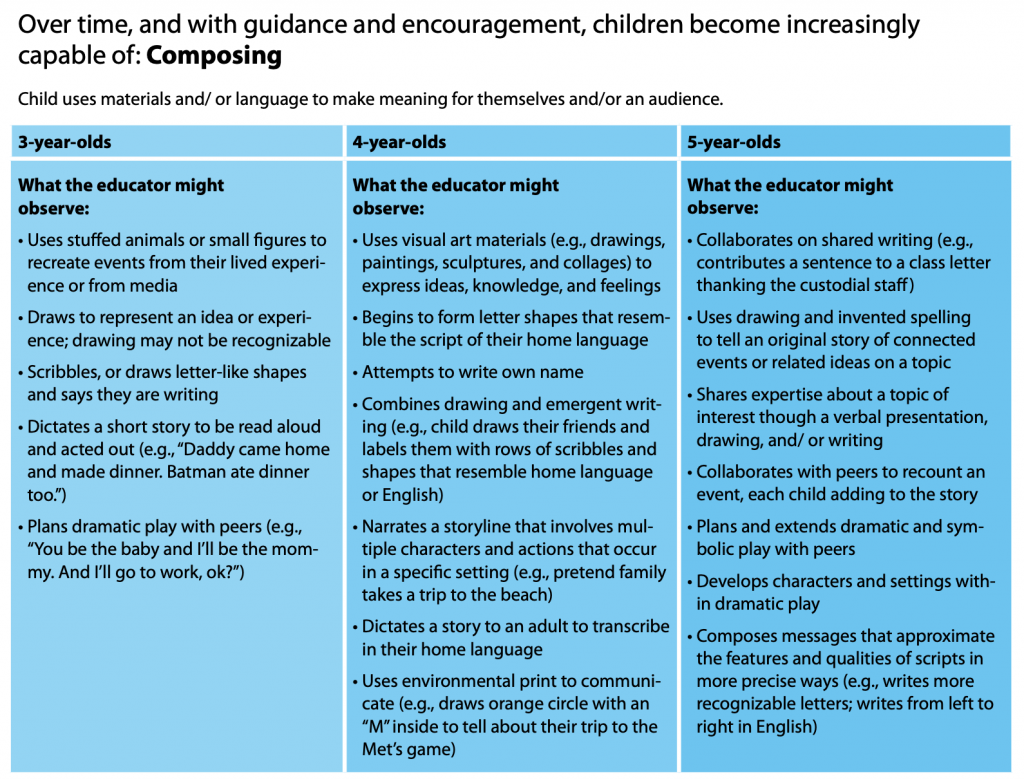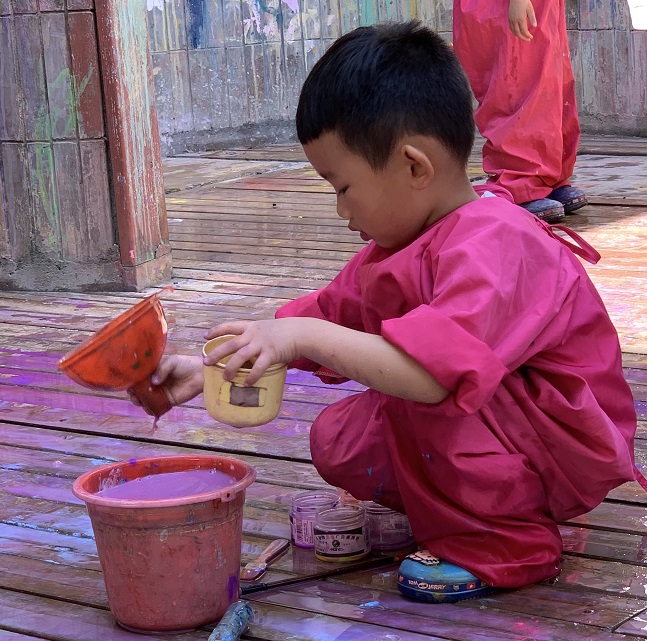All children are artists. The problem is how to remain an artist once he grows up. – Pablo Picasso
From an early age, children engage with the world as artists, composing arrangements of objects, lines, colors, words, sounds, movements, and gestures. Children use art all the time, to represent their ideas about beauty, science, math, history, and relationships. Art-making is an important component of social-emotional development, giving children ways to express and understand their feelings. Children’s engagement in art is intense and concentrated, and their creations are often startlingly poetic.
Within a play-based learning environment, children access all the arts, continuously, to represent their thinking in increasingly precise, varied, and complex ways. Each child develops unique forms of expression that reflect their own disposition, interests, and abilities. The educator’s role is to provide children with a variety of interesting materials and time to explore them. For these reasons, dance, music, theater,and visual and media arts do not each have their own domain within the Early Learning Guidelines but are incorporated throughout all of the sub-domains.
The Early Learning Guidelines include descriptions of the processes by which children engage in art. These include:
- Creativity and Inventiveness (Approaches to Learning)
- Representing (Cognitive Development)
- Composing (Language and Literacy)
- Creating and Interpreting Multimedia Texts (Language and Literacy)
For example, the Composing subdomain in Language and Literacy describes how a child uses materials and/or language to make meaning for themselves and/or an audience. This subdomain describes the developmental progress a child makes as they go from being a two-year old who ‘uses objects such as stuffed animals or action figures to act out simple stories’ to a pre-schooler who ‘dictates stories’ and ‘plans dramatic play with peers’ to an kindergartener who ‘uses drawing and invented spelling to tell an original story of connected events or related ideas on a topic’ and finally on to an early elementary student who ‘composes stories with a beginning, middle and end.’ This development trajectory of the artistic skill of composition grows out of children’s play.

The 3-5 year old section of the Composing Sub-domain of the Revised ELGs
The Early Learning Guidelines provide ideas for ways the educator might support the child’s development. These suggested supports are intended to be used with any age level according to the educator’s judgement. Within composing these ideas include:
- Observe children’s composing in the dramatic play area: Are they planning roles? Are they dramatizing characters? What scenarios are they acting out?’
- Assume that children are making sense with their early writing; when a child writes on their own a string of letters that do not make sense to the educator, the educator asks, “What story did you write?” or “What story do your words tell?”’
Authentically engaging with children’s creative processes in a play-based environment allows children to strengthen their individual artistic expression as they mature. In our current moment, play and art-making are necessary for children’s emotional health and recovery. They are coming back to care with so many stories to tell.
Helen Frazier is the Institute’s Director of Early Childhood.

